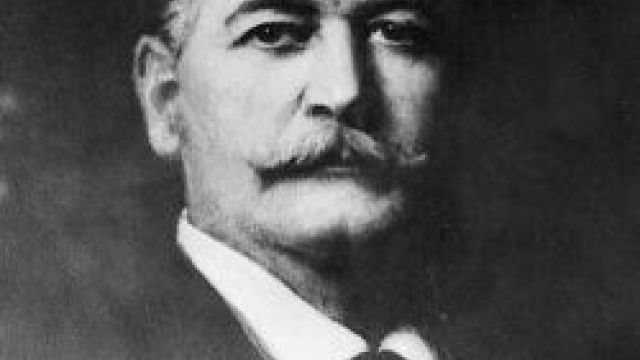Bigger Than The Beatles
When James Cassius Williamson persuaded reigning world stage superstar Sarah Bernhardt to tour here in 1891, he pulled off a coup unequalled in Australian entertainment industry history before or since – even bigger that The Beatles.
Although the high overheads meant the tour wasn’t immensely profitable (Bernhardt’s fee alone was £100 per performance), as an impresario it brought him international prestige and respect. Audiences adored Bernhardt, performing in French, while the tour itself was an event unprecedented in the short history of the soon-to-be nation.
Bernhardt was no one-off for the man whose name would be synonymous with commercial theatre in Australia for more than a century, and after whom Live Performance Australia has named their life achievement awards. ‘The Firm,’ as J. C. Williamson Theatres was known in ‘The Industry,’ was a major, sometimes virtual sole, player into the 1980s.
Born on August 26, 1845 (perhaps a year earlier) in Mercer, Pennsylvania, sixteen years later a stage-struck young James Cassius Williamson would put the strictures of his middle class, Scottish-Presbyterian background behind him and join a touring theatrical troupe.
In 1874 J. C. Williamson and his wife Maggie Moore arrived in Australia with Struck Oil, a play Williamson had purchased from dramatist Sam Smith for £100, and which made the couple internationally famous. A huge hit, audiences at the show during its 43 night Melbourne run totalled 93,000, only just short of the city’s then population of 110,000.
The Williamsons returned to Australia in August 1879, Williamson having secured the license to produce H.M.S. Pinafore in the Australasian colonies for one year at a price of £300. Up until this time unauthorised performances of H.M.S. Pinafore had already made Pinafore the biggest comic opera hit Sydney or Melbourne had yet seen.
Williamson pursued unauthorised presentations through the legal system. He would subsequently obtain the Australasian license for all the further Gilbert and Sullivan operas. The flat fee, eventually covering all 13 Gilbert and Sullivan operas, stood at £300 per year for more than 40 years. 'The Firm' would retain those rights until the world-wide copyright ended in 1960.
Williamson produced for the Australasian stage for the remainder of his life, merging with major competitors including George Musgrove and Arthur Garner in 1882, and Clarke and Meynell in 1911.
The scale and logistics of Williamson’s enterprises were staggering.
Every so often, after remaining stationary for weeks, the touring itineraries of the J.C. Williamson productions would see his companies moving en masse at the same time. At one stage early in August 1905 five of his companies, totalling 300 members, were on the water at once. The 95 members of the Royal Comic Opera Company and the 50 strong Knight-Jeffries Company exchanged places in Adelaide and Perth, while Miss Tittell Brune and her company of 40 travelled the length of New Zealand from Dunedin to Auckland. The Gilbert and Sullivan Company travelled all the way from Brisbane by steamer and train, with Nance O’Neil and her company of 40 travelling north from Melbourne to replace them. There was just one hitch in the precision planning of the entire operation. The Gilbert and Sullivan Company’s boat encountered the full force of a southerly gale, delaying them to such a degree that a special train had to be chartered in Sydney to enable them to reach Melbourne in time for their opening.
J. C. Williamson performed for the last time at a charity matinee at His Majesty’s Theatre, Sydney on February 22, 1913, playing a 90 year-old Irishman in Boucicault’s one-act play Kerry. He died in Paris on July 8, 1913 surrounded by his second wife and children. Theatres went dark on the night the news was received. Williamson left an estate of nearly £200,000 in N.S.W. and more than £60,000 in Victoria.
Neil Litchfield

